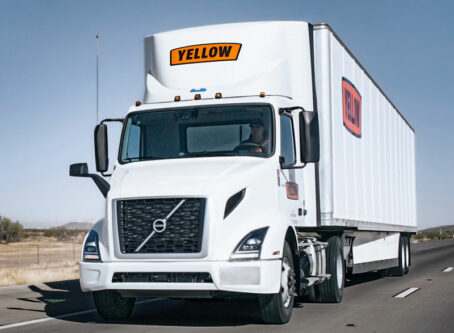FM is coming to a CB radio near you
The FCC has approved the use of FM transmission in CB radios.
Virtually every CB (Citizen’s Band) radio transmits in AM. Now, FM will presumably bring better sound in the cab, just as it did for commercial radio decades ago. No, CB FM won’t provide the same quality sound as commercial FM radio. Bandwidth restrictions will prevent that, but FM on the CB will definitely be easier on the ears than standard AM.
AM stands for “amplitude modulation,” a scheme for turning sound waves into radio waves. FM stands for “frequency modulation,” a different scheme with different properties. The FCC rules did not allow FM transmissions on CB radios, which only offer AM and single sideband modes. AM is used for most CB communications.
Then in 2017, CB manufacturer Cobra Electronics requested that the FCC revisit the issue of FM on CBs. Many foreign countries have allowed FM on CB radios for some time, among them Russia, Brazil and most European countries. But the FCC had ruled that FM on CB would “expand or substantially change the character of the service” and that it would “be incompatible with the existing equipment base.” In other words, CB users would have to buy new radios in order to use FM.
No one filed an objection to Cobra’s request.
In fact, Cobra’s request was joined by President Electronics, another CB manufacturer, and by August the FCC had changed its mind. In a “memorandum opinion and order of reconsideration” in August, the agency reversed its FM ban. CBs can now have both AM and FM capabilities. The addition of FM capabilities to AM CBs “will not substantially change the fundamental nature of the CB radio service and will improve the user experience, as described by Cobra and President,” the memorandum said in a reversal of its original position. “How people use the service will not materially change or be expanded.”
So, CBs will be able to offer both AM and FM bands, though it will take time for FM-capable radios to become mainstream. Until then, the FM band will remain “incompatible with the existing equipment base.” No one will be able to use FM without an FM-capable CB.
The new rule should help sell more CB radios.
What’s the difference between AM and FM on CB radio?
AM on a CB is likely to pick up interference and background noises from sources like spark plugs, nearby transformers, and solar radiation as well as random voices from near and far. Taken together, this is often referred to as static. FM, on the other hand, focuses on the strongest signal and delivers that sound if not static free then with less static than AM. They call this FM characteristic “capture.” That means you are only likely to hear one voice at a time on the FM band. That’s good for sound quality in the cab.
However, sometimes it’s good to hear more than one source, particularly if it involves safety. For example, air traffic control uses AM modulation so that someone – maybe another pilot – can break into a conversation if necessary. With FM, only the strongest signal will be heard.
FM transmissions will only sound like noise on an AM band. Both the sending and receiving CBs have to be FM capable with FM selected on both radios to work properly.
Will FM gradually replace AM on CB radio?
“AM will likely never go away completely,” Cobra Vice President Michael Williams said in a 2018 letter to the FCC. Williams pointed out that even the earliest transmission modes still exist in amateur radio – even Morse code.
“Even though there are newer, better, and more efficient ways to use RF (radio frequency) for communications, the original methods are still used to this day, and in all likelihood will continue to be used well beyond the foreseeable future,” Williams wrote.
You won’t have to buy a new CB if you don’t want to. LL









